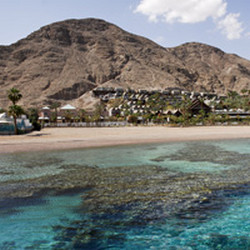Conserving rocky-shore ecosystems
The shores of the Levant are the hottest, saltiest and most nutrient-poor area in the whole Mediterranean. The region is also a hotspot for marine biological invasions, mostly from alien species that gain entry to the Mediterranean through the Suez Canal. An additional threat is the loss of vermetid snails, which grow cemented together to create distinctive intertidal reefs. The LRSB project studied the threats arising from climate change, bioinvasion and the loss of vermetid snails (described as ecosystem engineers). Researchers monitored the ecological community and biodiversity patterns along the Israeli coast to follow their changes over time. Both field and laboratory experiments were planned to improve the predictive ability of models that forecast ecological changes. Project findings revealed the high variability in community structure along the coast, which is greatest in winter and spring. The greatest differences between different areas of the reef occur between its edges and its centre. Results also highlight the near-complete removal of the reef-building vermetid snail Dendropoma petraeum. This has potentially disastrous consequences for the ecosystem's structural integrity. Researchers also observed the loss of the once abundant predatory snail Stramonita haemastoma and some algal species. The distribution of Brachidontes pharaonis, an invasive mussel from the Red Sea, was also examined. Furthermore, measurements of sea-surface temperatures showed that they are higher by 1.5–2.5 degrees Celsius than those measured 2 decades ago. Thanks to the work of LRSB, scientists now have a better understanding of the structure and dynamics of rocky-shore communities along the Israeli coast. By understanding the mechanisms and processes behind changes in biodiversity patterns over time and space, ecosystem management and planning can be improved. This will make a significant difference to ecosystems that have until recently been little studied and minimally managed.







